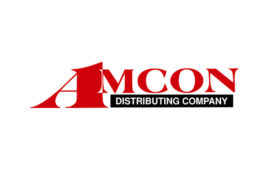Growing populations warrant c-stores’ investment in Hispanic/Latino communities.
By James Johnson, Jr., Terry Johnson and Allan Parnell
Hispanics/Latinos continue to reshape our nation’s demography and consumer markets. They are the nation’s youngest consumer group, with a median age of 28 and tend to be brand-loyal consumers, especially when culturally-sensitive marketing and advertising are used to target them.
Their buying power is impressive—an estimated $1.5 trillion in 2015. Convenience store owners have a unique opportunity to garner a greater share of these dollars if they understand the diversity that exists within the Hispanic/Latino population. Also, to increase their odds for success, retailers need to redesign their stores and broaden their mix of products and services.
BY THE NUMBERS
In 2015, the U.S. Hispanic/Latino population totaled 56.5 million, representing 18% of the nation’s total population. Its growth (12.2%) outpaced total U.S. population growth (3.9%) between 2010 and 2015, extending a more than two-decade trend.
In absolute numbers, the Hispanic/Latino population increased by 6.2 million during this period. Nearly three quarters of this growth (74%) was the result of natural population change, that is, more births than deaths. The balance was due to international migration, that is, an influx of Hispanic/Latino newcomers from abroad.
Significant domestic migration—movement within the U.S.—undergirded this growth, leading to considerable regional redistribution of the Hispanic/Latino population. The South was the primary migration destination, continuing a trend dating back to at least the early 1990s, and received net flows of Hispanic/Latino migrants from the Northeast, the Midwest and the West between 2010 and 2015.
Taking into account both natural growth and migration trends, an uneven pattern of Hispanic/Latino population growth was evident at the state level in 2015, with three types of Hispanic/Latino markets for potential c-store growth and expansion:
• Nine U.S. states, including California, Texas, Florida, New York, Illinois, Arizona, New Jersey, Colorado and New Mexico—account for about 63% of Hispanic/Latino population growth between 2010 and 2015. They were home to 76% of the nation’s Hispanic/Latino population in 2015. Most of the Hispanic/Latino communities in these states are long-established and therefore are mature markets.
• Another 27 states—relatively new Hispanic/Latino population migration magnets—captured 28% of Hispanic/Latino population growth between 2010 and 2015. Hispanics/Latinos began moving to these states in significant numbers during the late 1990s/early 2000s and growth continues as a function of both migration—domestic and international—and natural population increase. Combined, these states were home to about one-fifth of the nation’s Hispanic/Latino population in 2015. Given the timing of their growth and development, Hispanic/Latino communities in these states are defined as emerging markets.
• The remaining 14 states (plus the District of Columbia)—future Hispanic/Latino population growth magnets—captured the balance of net Hispanic/Latino population growth between 2010 and 2015. In these states, the Hispanic/Latino population influx is fairly recent—mainly since 2010. Most of the growth to date has been a function of international as opposed to domestic migration, which typically foreshadows continued growth through chain migration from abroad. For this reason, Hispanic/Latino communities in these states are labeled as incipient markets.
As a result, major opportunities exist for c-store owners to expand in existing mature and emerging markets. They also have an opportunity to strategically position themselves for first-mover advantage in incipient markets.
LOOKING AHEAD
Among the nation’s major race/ethnic groups, the Hispanic/Latino population is projected to experience the largest absolute gains (34.8 million)—accounting for 59% of projected total U.S. population growth—between 2015 and 2040.
Success in fully tapping this booming market will hinge on convenience store owners’ ability to customize their product and services mix to align with consumer tastes and preferences of the specific Hispanic/Latino group(s) in their local markets.
But such statistics may mask critical success factors in attracting and retaining Hispanic/Latino customers.
Convenience store owners must understand that where Hispanic/Latinos live in the U.S. is strongly influenced by their specific country of origin. The U.S. Census covers
various Hispanic/Latino demographics including Mexicans, Puerto Ricans, Guatemalans, Salvadorans, Colombians, Ecuadorians, Peruvians, Cubans and Dominicans.
All of these groups enter the U.S. with different cultural orientations and consumer tastes.
Moreover, each group typically follows well defined migration streams when they settle in the U.S.
Differing Demographics
At the regional level, for example, Mexicans are concentrated mainly in the West and South; Puerto Ricans are in the Northeast and South; Cubans are overwhelmingly in the South; and Dominicans reside mainly in the Northeast.
Because the various groups often overlap in some regions and group-specific socio-demographic metrics may differ in significant ways from aggregate statistics on Hispanics/Latinos, settlement patterns can be quite nuanced at the neighborhood or community level where store location decisions are typically made.
Given the strong and deeply-rooted family orientation of Hispanics/Latinos, convenience store owners must strive—in all of these markets—to make convenience stores true shopping destinations—one-stop venues, not only for healthy food and basic household items that align with group specific cultural tastes and preferences, but also for a range of services that address basic social and health needs of the population.
Consistent with the concept of Hispanic/Latino new urbanism—a form of community development that aligns with the unique family, cultural and community orientations of Hispanics/Latinos—such an expanded model is likely to work especially well in food deserts where grocery stores are nonexistent.
Hispanic/Latino buying power will only increase in the years ahead—as the various specific origin groups become better educated and more upwardly mobile. For c-store owners, making a concerted effort to attract and retain Hispanic/Latino consumers makes good business sense.
James Johnson, Jr. is the William R. Kenan Jr. Distinguished Professor of Strategy and Entrepreneurship at Kenan-Flagler Business School, University of North Carolina at Chapel Hill. Terry Johnson is the principal of Yuubik Consulting. Allan Parnell is vice president of the Cedar Grove Institute for Sustainable Communities.






